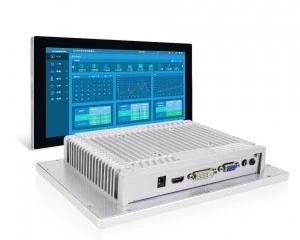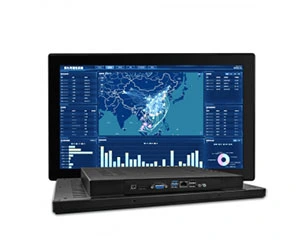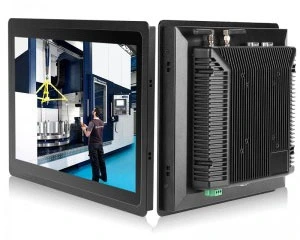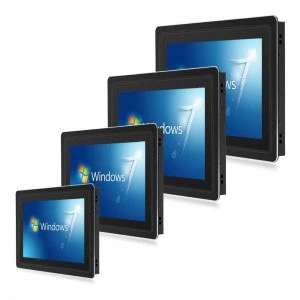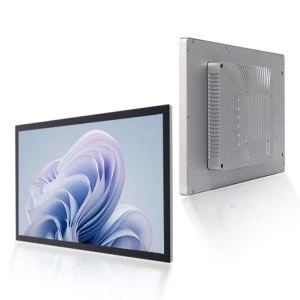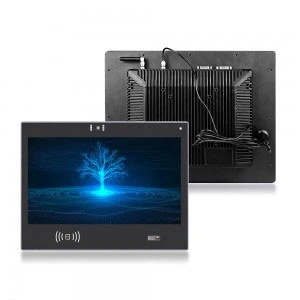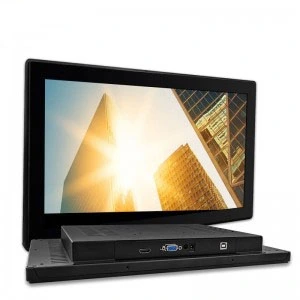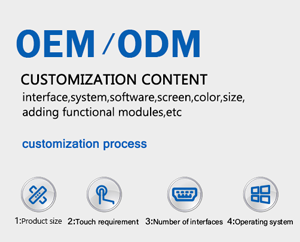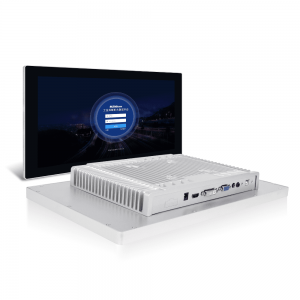A friend left a message asking: his industrial touchscreen panel pc has obviously been switched on, but no display, or black screen, up to more than 20 minutes, has been such a problem. Today we will talk about this problem.
COMPT, as a manufacturer of industrial touchscreen panel pc for 10 years, has encountered similar problems in the actual production test.
For example: when the industrial touchscreen panel pc power on, found that although the system has been started, but the monitor does not show any display, the screen is in a black screen or grey screen state. The main reason is that no signal is given, which is equivalent to the motherboard not recognising this screen, and is caused by the motherboard not sending LVDS signals to the monitor correctly.
Core Problems:
The motherboard of this INDUSTRIAL touchscreen panel pc fails to recognise or fails to connect to the display correctly, resulting in the LVDS signal not being transmitted efficiently, and thus the screen fails to receive the display signal.
Solution:
1. Short the pins 4-6pin of the motherboard's LVDS interface, that is, solder them together with tin, so that the signal can be detected.
2. The backlight jump cap to 5V, to solve the problem of not displaying the boot logo, in fact, has been powered on, but still shows a black screen, that is, the boot logo did not pop up, we can also troubleshoot and solve through this method.
Problem troubleshooting steps:
At the same time, we can also do the following troubleshooting work to solve the problem.
1. Check the hardware connection:
Make sure the LVDS interface and data cable are firmly connected and not loose or damaged.
Check whether the power cord and power module are working properly to ensure that the monitor and motherboard get stable power supply.
2. Check the system configuration:
Enter the BIOS setup, check whether the LVDS related options are enabled, and make sure the resolution and other parameters are set correctly.
Enter the operating system and check whether the display settings and graphics card driver are normal. Try to update or reinstall the graphics card driver.
3. Use test tools:
You can use a test tool such as an oscilloscope to measure the waveforms and voltages of the LVDS signals to determine if the signals are being transmitted properly.
Check the power and signal inputs on the logic board to make sure they are within normal range.
4. Replacement method test:
Try connecting the monitor to another normal computer or device to troubleshoot the monitor itself.
Try testing with other known good LVDS data and power cables.
5. Professional Repair:
If none of the above steps solve the problem, there may be a more serious hardware failure. At this point, it is recommended to return to the original factory for testing and repair.
Precautions
Before carrying out any hardware operation, please ensure that the power supply has been disconnected and follow the relevant safety practices.
During the troubleshooting and repair process, please patiently and meticulously check every possible point of failure to avoid omission.
If you are not familiar with hardware maintenance or have no relevant experience, please do not

Penny
Web Content Writer
4 years of experience
This article is edited by Penny, the website content writer of COMPT, who has 4 years working experience in the industrial PCs industry and often discusses with colleagues in R&D, marketing and production departments about the professional knowledge and application of industrial controllers, and has a deep understanding of the industry and products.
Please feel free to contact me to discuss more about industrial controllers. sales@gdcompt.com









